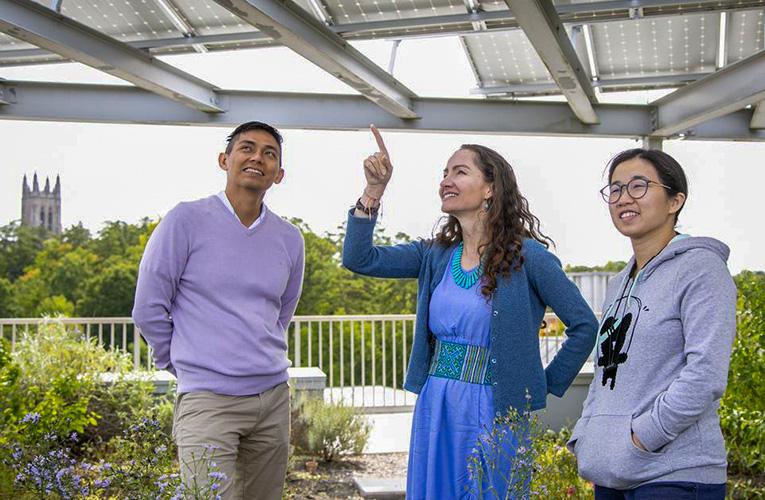Tim Lucas, 919/613-8084, tdlucas@duke.edu
DURHAM, N.C. – Scientists increasingly recognize that dinitrogen (N2) fixation plays a major role in the oceanic carbon cycle by contributing to total carbon fixation and export from the surface to the deep ocean.
Until now, however, the only ways scientists have had to quantify N2 fixation in the ocean have been time-consuming and laborious methods that involves discrete sample collection at sea, incubation, and analysis at very low frequencies, perhaps twice daily.
Such a sampling frequency likely misses the most important events in what is believed to be a very episodic biogeochemical process.
A new method developed by a team led by Nicolas Cassar, associate professor of biogeochemistry at Duke University’s Nicholas School of the Environment, could change all that.
It allows scientists to conduct rapid and nearly continuous analysis of N2 fixation, using a method called Flow-through Incubation Acetylene Reduction Assays by Cavity Ring-down Laser Absorption Spectroscopy (FARACAS).
“The near real-time observations provided by this new method allow more frequent and flexible sampling, and can serve as a biogeochemical compass to assist researchers in locating and identifying rare episodic events and N2 fixation hotspots,” Cassar says. “These high-frequency measurements will ultimately help us improve global oceanic budgets of nitrogen and advance our understanding of the oceanic carbon cycle.”
Cassar and his team published a peer-reviewed paper detailing their new method this January in the journal Analytical Chemistry.
In FARACAS, dissolved acetylene (C2H2) is mixed with seawater upstream of a continuous-flow stirred-tank reactor, in which C2H2 reduction to ethylene (C2H4) takes place. Downstream of the flow-through incubator, the C2H4 gas is stripped using a bubble-column contactor and then circulated with a diaphragm pump into a wavelength-scanned cavity ring-down laser absorption spectrometer.
Tests conducted on recent research cruises confirm that the new method provides high-resolution and precise real-time mapping of aquatic N2 fixation, its daily cycle, and its response to environmental gradients. The tests also show that FARACAS can be adapted to measure other biological processes, as well.
Primary funding for Cassar’s team’s research came from a National Science Foundation CAREER Grant (#3331939) and a Link Foundation Ocean Engineering & Instrumentation Fellowship. Additional support came from North Carolina Sea Grant (#2014-1920-18) and a Laboratoire d’Excellence LabexMER grant (#ANR-10-LABX-19), co-funded by the French government.
Co-authors of the new paper are Weiyi Tang, a PhD student in Cassar’s lab at Duke; Kuan Huang, a former postdoc in Cassar’s lab who is now an application scientist at Picarro Inc.; and Hans Gabathuler.
CITATION: “Method for High Frequency Underway N2 Fixation Measurements: Flow-Through Incubation Acetylene Reduction Assays by Cavity Ring-Down Laser Absorption Spectroscopy (FARACAS), Nicolas Cassar, Weiyi Tang, Hans Gabathuler and Kuan Huang; Jan. 17, 2018, Analytical Chemistry. DOI: 10.1021/acs.analchem.7b04977




